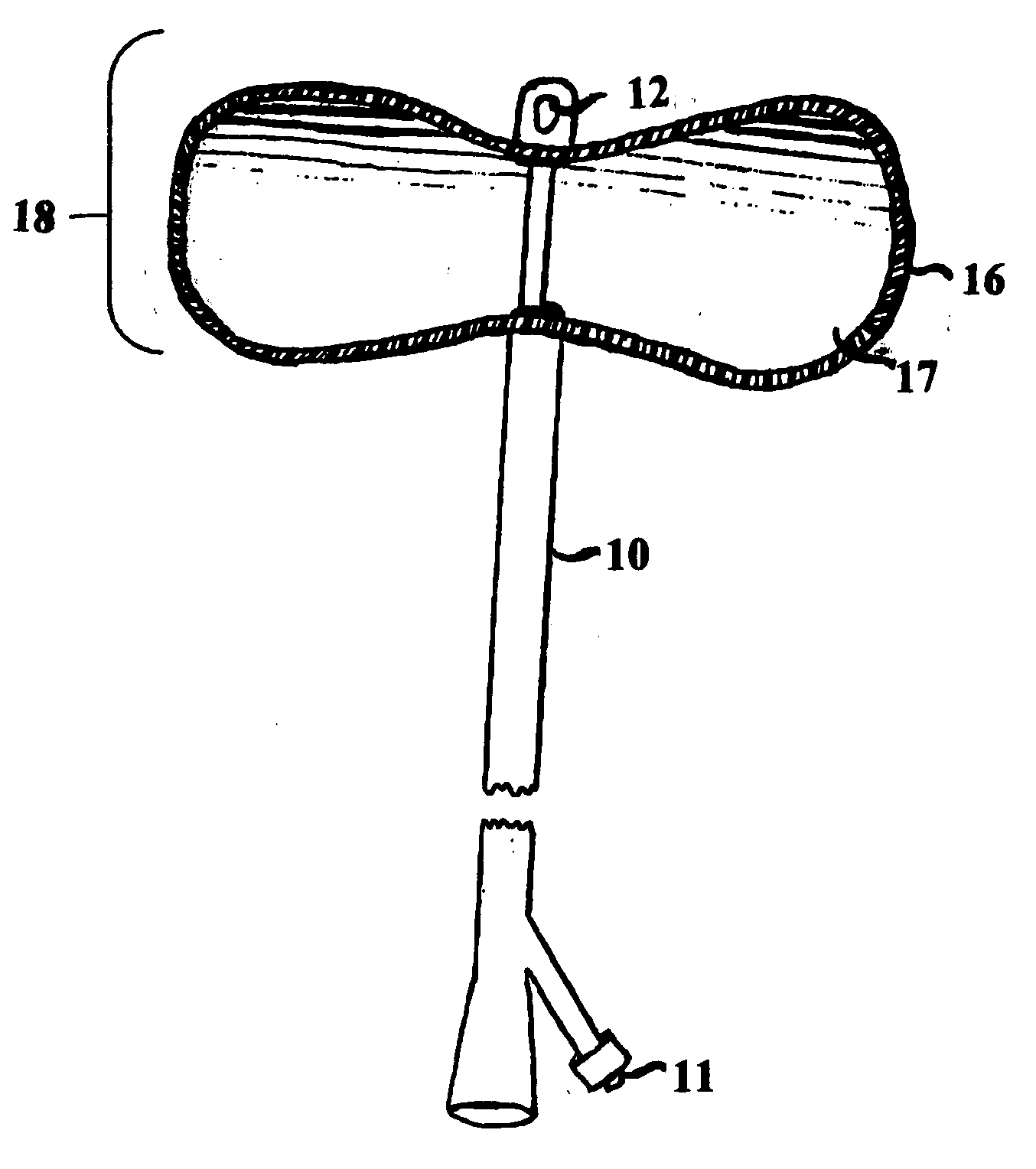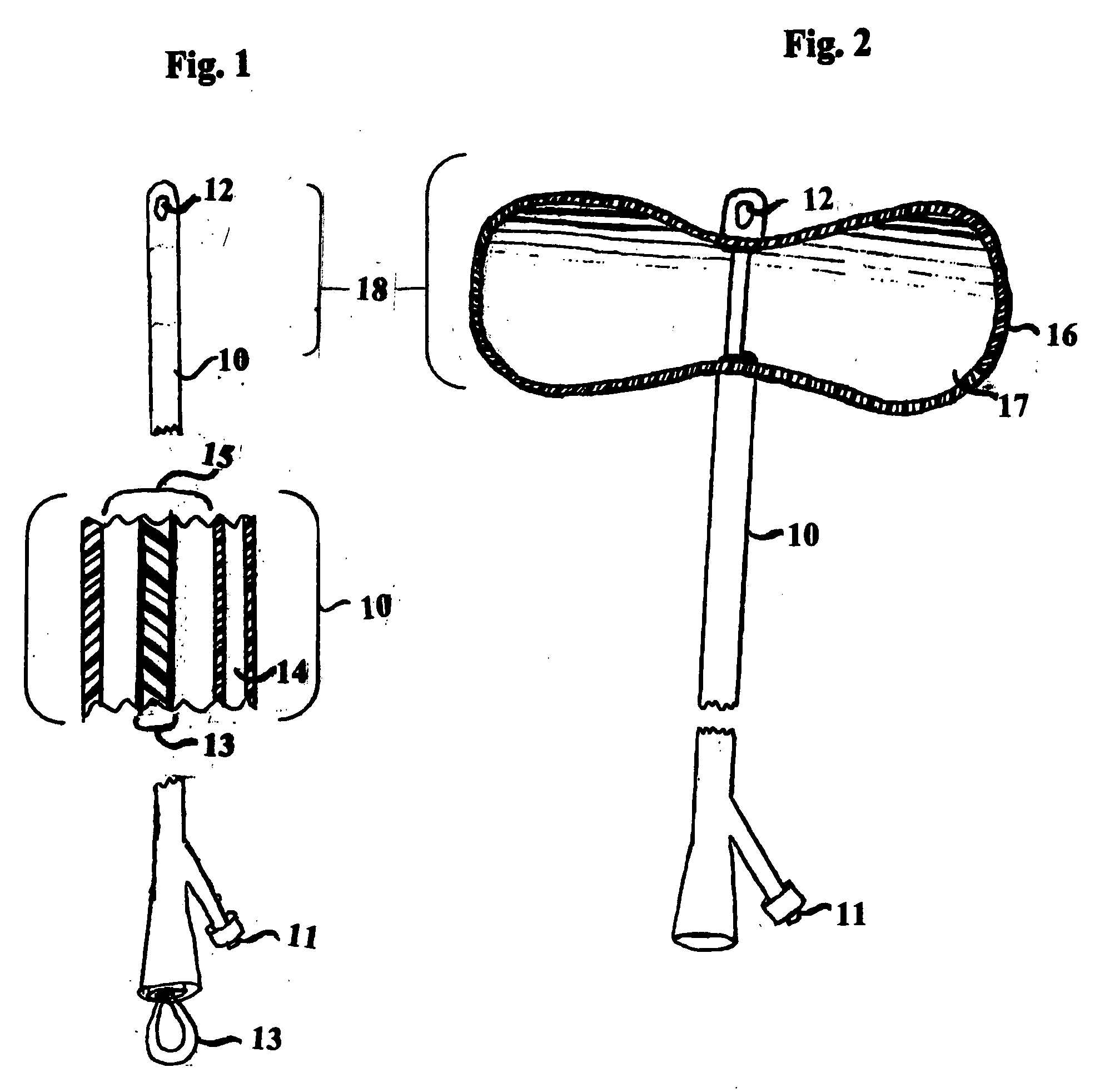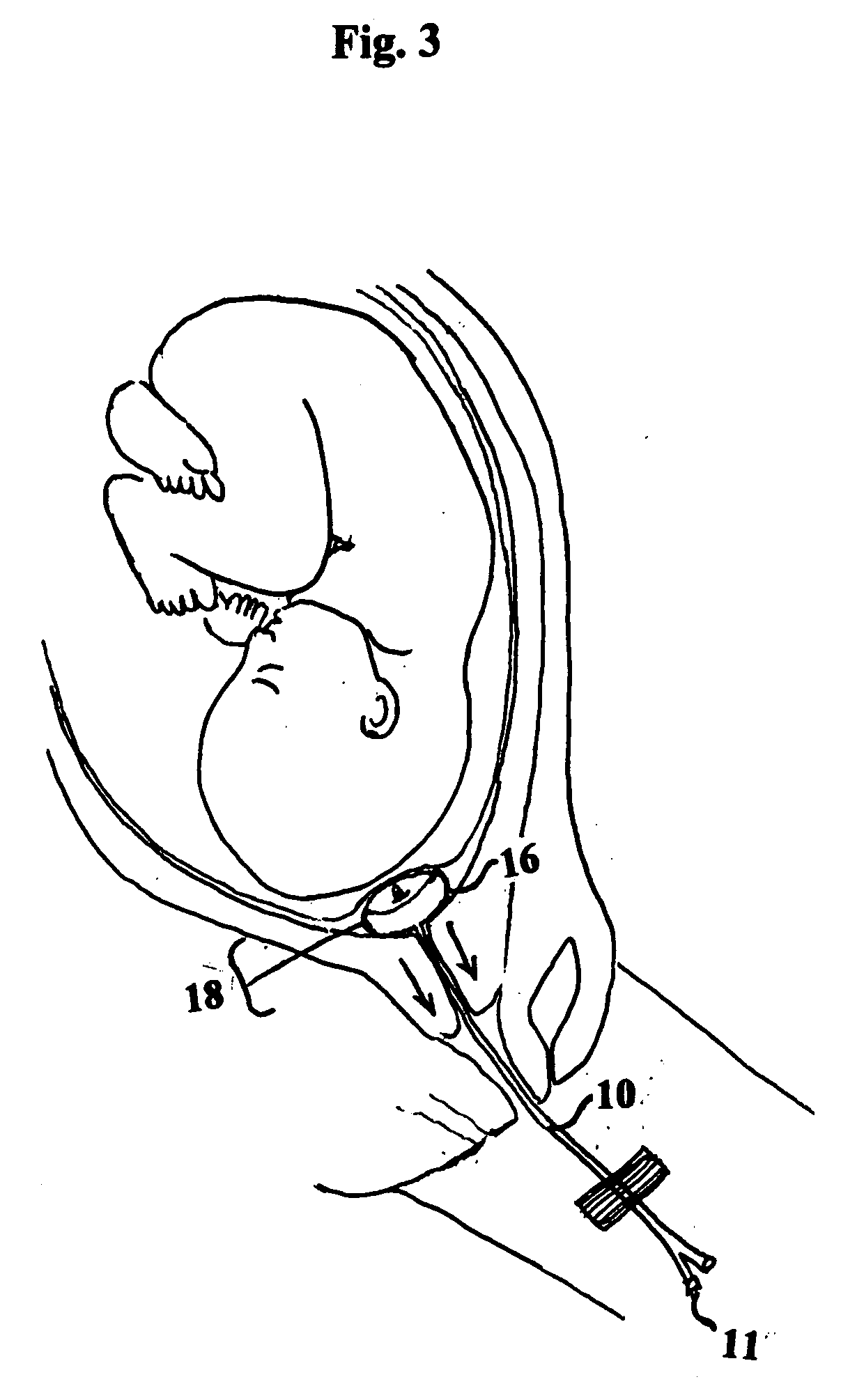Cervical dilator catheter
a catheter and cervix technology, applied in the field of cervical dilator catheters, can solve the problems of limiting the patient's mobility, uterine hyperstimulation and fetal distress, and the method is often a prolonged process, so as to shorten the length of labor, facilitate the insertion through the cervix, and facilitate the effect of catheter insertion
- Summary
- Abstract
- Description
- Claims
- Application Information
AI Technical Summary
Benefits of technology
Problems solved by technology
Method used
Image
Examples
Embodiment Construction
[0013]The catheter as illustrated in FIG. 1 comprises a slender, flexible tube 10 that has an outlet port 12 on the side of the distal tip, this allows for drainage of amniotic fluid through the main lumen 15 of the catheter. There is a fixed inflatable balloon 16 on the distal end as shown in FIG. 1 and FIG. 2. This balloon 16 is inflated with sterile water 17 or normal saline 17 as shown in FIG. 2. The liquid is introduced into the balloon 16 through an injection port 11 and through the inflation tube 14. The balloon 16 is disc-shaped, measuring approximately 3-4 cm in height with a diameter of 6-8 cm when inflated as shown in FIG. 2. The catheter 10 also accommodates a flexible, bendable, removable plastic stylet 13 in the main lumen 15 of the catheter, as shown in FIG. 1.
[0014]FIG. 3 illustrates placement of the catheter of the catheter 10 in the cervical region of the uterus for use as a cervical dilator. With the balloon 16 deflated, and with the stylet 13 in place the provide...
PUM
 Login to View More
Login to View More Abstract
Description
Claims
Application Information
 Login to View More
Login to View More - R&D
- Intellectual Property
- Life Sciences
- Materials
- Tech Scout
- Unparalleled Data Quality
- Higher Quality Content
- 60% Fewer Hallucinations
Browse by: Latest US Patents, China's latest patents, Technical Efficacy Thesaurus, Application Domain, Technology Topic, Popular Technical Reports.
© 2025 PatSnap. All rights reserved.Legal|Privacy policy|Modern Slavery Act Transparency Statement|Sitemap|About US| Contact US: help@patsnap.com



